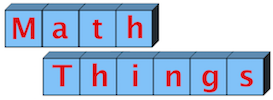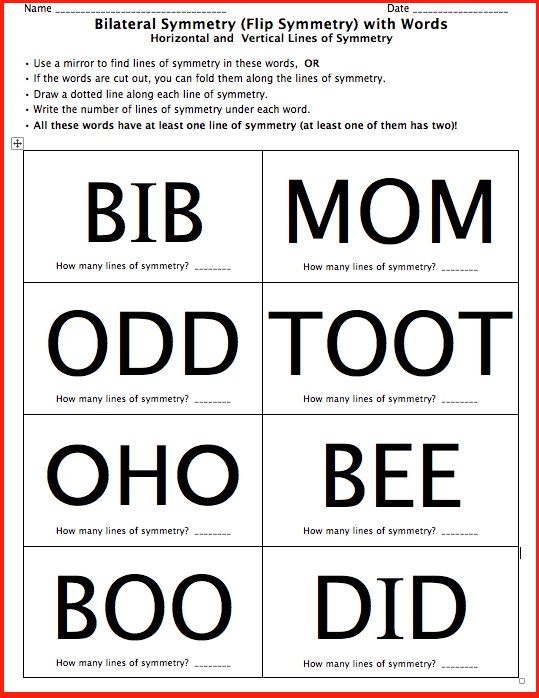Symmetry with Letters and Words
Many letters, and all these words, have bilateral, or “flip,” symmetry. The purpose of these arrangements on the page is for students to draw all possible lines of symmetry through a letter or word. Of course, some letters aren’t symmetrical at all.
And many or most students can simply look at a shape or word and visualize the line of symmetry. But for when we can’t visualize lines of symmetry, there are at least two ways of finding them: mirrors, and folding. Mirrors can be used with any flat surface, so they can be used on these letters and words. Students need to hold the mirror perpendicular to the surface of the paper along what they think is a line of symmetry, and they should be able to see the original shape, letter, or word – half on the paper, half in the mirror.
The other way is by folding. These words and letters are in tables to make it easy to cut them into individual blocks if you want to, and the cut-out blocks are then given to students to fold along the lines of symmetry. That’s more work and paper for you, but sometimes it may be worth it. The blocks should be folded on the outside of the line of symmetry, as shown at left. If students try to fold the letter on the inside, they can’t see it very well when they try to find the middle.
Note that the fonts of these letters are not all the same. Some letters are rendered in a particular font to eliminate “tails” or flourishes that ruin the symmetry. Students could always practice writing letters in a way that makes them symmetrical. The capital Q, capital K, and lower case a and l (as shown at left) are good examples of letters that can be written symmetrically but often aren’t.
“Oyoyo,” BTW, is a Nigerian word of endearment for Mother, used in songs. Some of your students may be familiar with it. It’s also the name of an online fashion vendor based in Nigeria.




